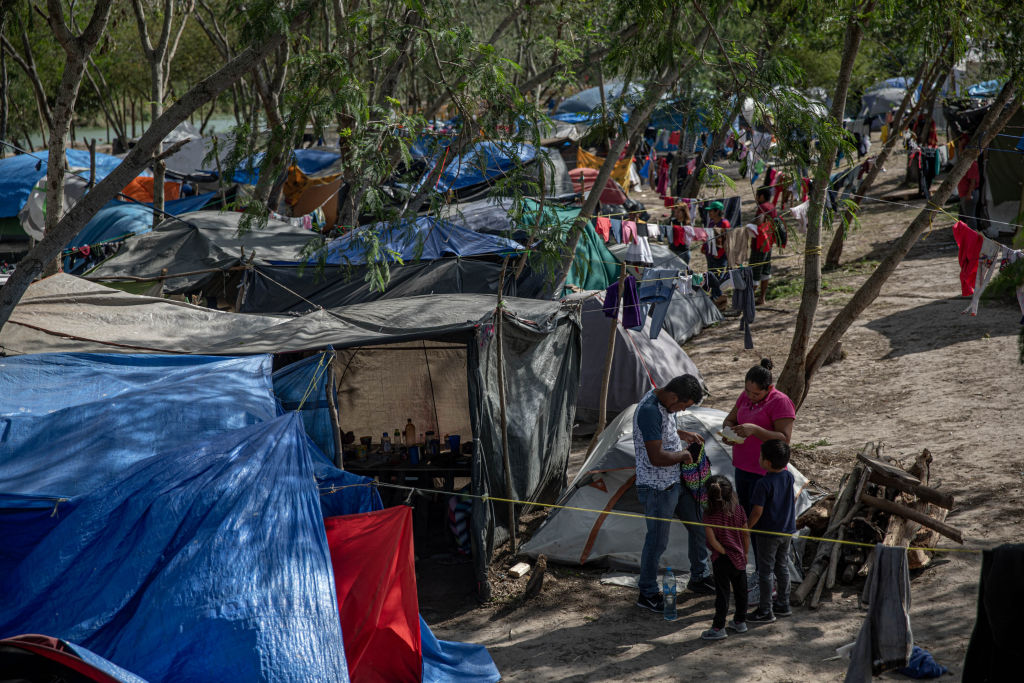
On June 30, the Supreme Court ruled that the Biden Administration has the authority to terminate the Migrant Protection Protocols (MPP), a Trump-era border policy also known as “Remain in Mexico” that forced asylum seekers to wait in Mexico while their case was adjudicated in the U.S. Yet one month after that decision, the Biden Administration still has not ended the policy.
Some experts say the Biden Administration may be moving carefully on ending MPP to avoid another months-long legal battle. “There has been continual pushback, especially from those courts, to the Administration’s executive actions,” says Doris Meissner, senior fellow and director of the U.S. Immigration Policy Program at the Migration Policy Institute (MPI), a nonpartisan research organization. “Everything has to be absolutely dot-the-I’s cross-the-T’s, because we’re seeing a pattern here that is likely to continue.”
The Biden Administration attempted to end MPP in June 2021, but was blocked from doing so by a judge for the Northern District of Texas who issued an injunction after the conservative Attorneys General from Texas and Missouri sued. While the Biden Administration ultimately prevailed at the nation’s highest court, the Supreme Court has to certify its June 30 opinion and then send it down the ladder to the Fifth Circuit Court of Appeals so that the Texas district court can formally end the injunction. It may take time, potentially weeks, for that process to play out.
Read more: Why Judges Are Basically in Charge of U.S. Immigration Policy Now
“The injunction remains in place until it is lifted,” a Department of Homeland Security (DHS) spokesperson tells TIME. “This will not happen until after the Supreme Court’s judgment has issued, and the lower courts take further action. DHS will take immediate steps to terminate MPP as soon as legally permissible and urges the courts to act expeditiously once the judgment has issued.”
Still, immigrant advocates are increasing pressure on DHS to move faster. “Their hands aren’t tied,” says Blaine Bookey, legal director of the Center for Gender and Refugee Studies at the University of California, Hastings. “Every single day [MPP is] in place it’s causing harm, it’s endangering lives, and it’s frankly allowing the Trump Administration to rule from the grave.”
More from TIME
The Biden Administration could take steps to prepare for the end of MPP while the court procedure unfolds. DHS could begin coordinating with local organizations and shelters on the border to prepare for the people enrolled in MPP to be permitted to legally cross into the U.S., immigrant advocates say, or it could close down temporary tent courts where MPP hearings take place. Advocates who spoke to TIME say they haven’t seen evidence of these actions, and DHS did not immediately respond to TIME when asked about them.
MPP began in January 2019, and by the time Donald Trump left office, about 71,000 asylum seekers were placed in the program. Local shelters in Mexican border cities became overwhelmed, and people with no other place to go formed tent encampments along the border, the largest of which formed in Matamoros, across the border from Brownsville, Texas. Violence was commonly inflicted upon the migrants who lived there.
At the start of the Biden Administration DHS stopped enrolling new people into MPP and began allowing those who were already placed in the program to legally cross the border and await the remainder of their asylum case in the U.S. But after trying and failing to officially terminate the program in July 2021, the Administration was required to restart MPP, which it did in December. As of May 2022, about 5,000 people have been enrolled in MPP since it relaunched in December, according to the Transactional Records Access Clearinghouse, a research organization at Syracuse University.
Though many immigrant advocates and humanitarian aid workers at the U.S.-Mexico border await the official end of MPP, it isn’t the only Trump-era policy forcing migrants to wait in Mexico. U.S. border officials have used Title 42, a health measure invoked in March 2020 in the name of mitigating the spread of COVID-19, to immediately expel people who arrive at the border even if they wish to claim asylum. At the U.S.-Mexico border, more than 2 million Title 42 expulsions have taken place since the measure began, and other tent encampments like the one in Matamoros have formed as a result, including one in Reynosa across the border from McAllen, Texas. (The Reynosa encampment was shut down in May by Mexican authorities.)
Read more: Biden Is Expelling Migrants On COVID-19 Grounds, But Health Experts Say That’s All Wrong
The U.S. Centers for Disease Control and Prevention announced the termination of the Title 42 order in April, but again, conservative Attorneys General quickly filed a lawsuit, and in May a Louisiana federal judge required the Biden Administration to continue Title 42 expulsions.
Felicia Rangel-Samponaro, co-director of The Sidewalk School, an organization she co-founded in Matamoros to help kids continue their education while stranded in the encampments, wants to see Biden Administration move swiftly to end MPP. But “MPP could end right now as we speak and that would make no difference and Reynosa or Matamoros,” she says. “People will still be stuck [in Mexico]. The expulsions will continue to Reynosa seven days a week.”
More Must-Reads from TIME
- Donald Trump Is TIME's 2024 Person of the Year
- Why We Chose Trump as Person of the Year
- Is Intermittent Fasting Good or Bad for You?
- The 100 Must-Read Books of 2024
- The 20 Best Christmas TV Episodes
- Column: If Optimism Feels Ridiculous Now, Try Hope
- The Future of Climate Action Is Trade Policy
- Merle Bombardieri Is Helping People Make the Baby Decision
Write to Jasmine Aguilera at jasmine.aguilera@time.com